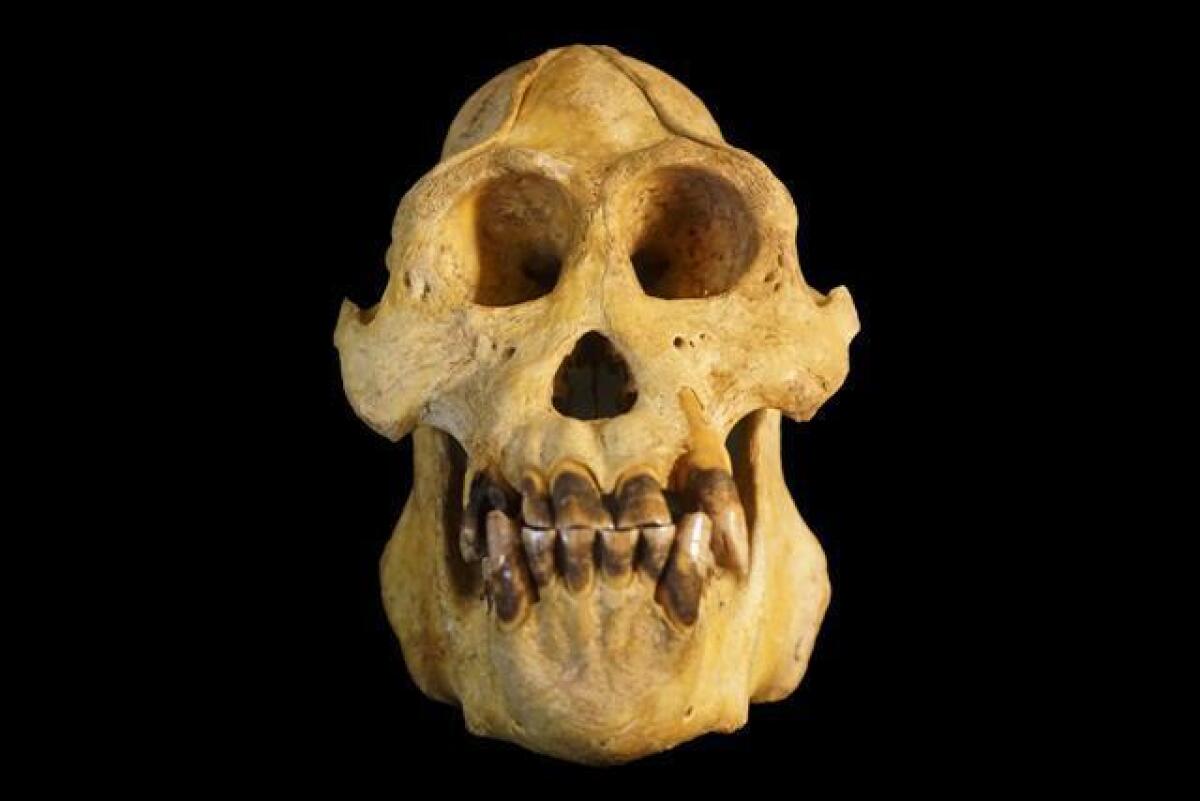Q&A: These orangutans are the newest species of great ape, and there are fewer than 800 left
- Share via
Hello Pongo tapanuliensis, and welcome to the family!
As of this week, these orangutans are being recognized as a distinct species of great ape. That brings to eight the number of great ape species alive today.
Two of the others are also orangutans (Sumatran and Bornean). Another two are gorillas (eastern and western). Then there are chimpanzees and their close relatives, bonobos. And finally, there’s us.
P. tapanuliensis may be the newest member of our family tree, but they may not last long. Fewer than 800 of them are left in their native Indonesia, and unless conservation measures are taken soon, they could succumb to threats such as habitat loss and inbreeding.
Read on to learn more about your fellow great apes. If you’re not keen on their scientific name, you can call them Tapanuli orangutans.
How was this species discovered?
It began with an unfortunate encounter in November 2013 between a male orangutan and a group of villagers in the South Tapanuli District of North Sumatra. The orangutan sustained mortal injuries in the “orangutan-human conflict,” according to a report published Thursday in the journal Current Biology.
After the animal’s death, scientists studied its skull and compared it with those of 34 other adult male orangutans. They found enough differences to convince them that the Tapanuli orangutan represented a separate species.

What kinds of differences?
It has a smaller skull, a shallower face and a more angled facial profile. It also has narrower eye sockets and a narrower mouth, among more than a dozen other small but significant physical differences cited in the Current Biology report.
The report authors also wrote that the call of male Tapanuli orangutans sets them apart from other orangutans. Their “long call” has a higher maximum frequency, which makes for a higher pitch. It also lasts longer (more than 111 seconds is typical, compared with less than 90 seconds for Bornean orangutans) and contains more “pulses” that are delivered at a higher rate.
Can you tell them apart by looking at them?
If their overall appearance were drastically different, perhaps they would have been recognized as a distinct species before now. They look more like Sumatran orangutans in some respects and more like Bornean orangutans in others.
The scientists noted that Tapanuli orangutans have a “linear body build” like their Sumatran cousins, but with frizzier hair. The males have large, flat cheek pads known as flanges that bear a closer resemblance to those of Bornean orangutans. However, female Tapanuli orangutans have beards, while female Bornean orangutans do not.

How are the three species related?
DNA evidence from 37 orangutans suggests that the common ancestor of all living orangutans came from mainland Asia to Southeast Asia, arriving in an area of Sumatra south of present-day Lake Toba. The Tapanuli orangutans are direct descendants of these pioneers.
About 3.4 million years ago, some of those early orangutans moved north of Lake Toba, becoming the ancestors of the Sumatran orangutans. Then, about 675,000 years ago, another group from south of Lake Toba split off, becoming the ancestors of the Bornean orangutans.
Even after these ancestral groups split off, there continued to be some genetic mixing between the Sumatran and Tapanuli orangutans until about 10,000 to 20,000 years ago, when habitat loss left the Tapanuli species completely isolated from the others.
What are their prospects for survival?
That’s unclear. With fewer than 800 left, the Tapanuli orangutans are the smallest of the three species. In fact, they are smaller than any other species of great ape. That includes the critically endangered Mountain gorillas, a sub-species of Eastern gorillas, according to the Sumatran Orangutan Conservation Programme.
The study authors fear that the population could get even smaller. Humans hunt them, kill them to protect crops and capture them for trade, they wrote. They also destroy the animals’ habitat in the Batang Toru forest by clearing trees and building roads. A proposal to build a hydroelectric plant could deprive them of up to 8% of their remaining range, the researchers noted.
“A combination of small population size and geographic isolation is of particular high conservation concern, as it may lead to inbreeding,” they wrote. The DNA of two Tapanuli orangutans contains signatures of recent inbreeding, they added.
“To ensure long-term survival of P. tapanuliensis, conservation measures need to be implemented swiftly,” they wrote.
Follow me on Twitter @LATkarenkaplan and "like" Los Angeles Times Science & Health on Facebook.
MORE IN SCIENCE
Survey reveals surprising mismatch between perception and reality of obesity in America
Using particle physics, scientists find hidden structure inside Egypt's Great Pyramid
Stripes? Spots? Scientists have new way to see what dinosaurs looked like on the outside
What dolphin diets reveal about climate change's effects off the California coast




